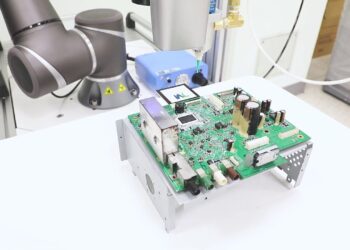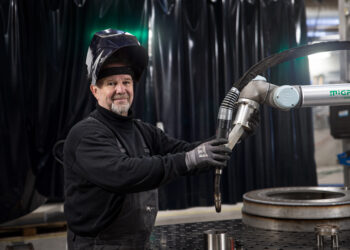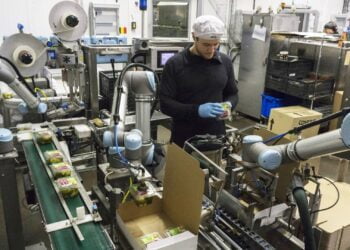The logistics world is changing rapidly. Customers are ordering more frequently, in smaller quantities, and expect short delivery times. This is leading to increasingly complex processes in warehouses and distribution centers. One of the biggest challenges is the efficient and flexible stacking of different products on a single pallet: mixed palletizing.
Where this work used to be done manually or with rigid, expensive industrial robots, the emergence of collaborative robots (cobots) offers a revolutionary alternative. Cobots combine automation with flexibility, safety, and simplicity, making them a perfect fit for modern intralogistics.
In this article, you will read five reasons why mixed palletizing with cobots is the future of intralogistics.
1. Flexibility: one cobot for an infinite number of product variations
Traditional palletizing systems are often designed for a single specific product or format. As soon as production changes, for example, new packaging, seasonal products, or customer variants, the settings must be adjusted manually or mechanical parts even replaced.
Cobots break through this limitation. Thanks to advanced vision systems, smart grippers, and simple software, they can recognize, pick up, and stack different products without complex adjustments.
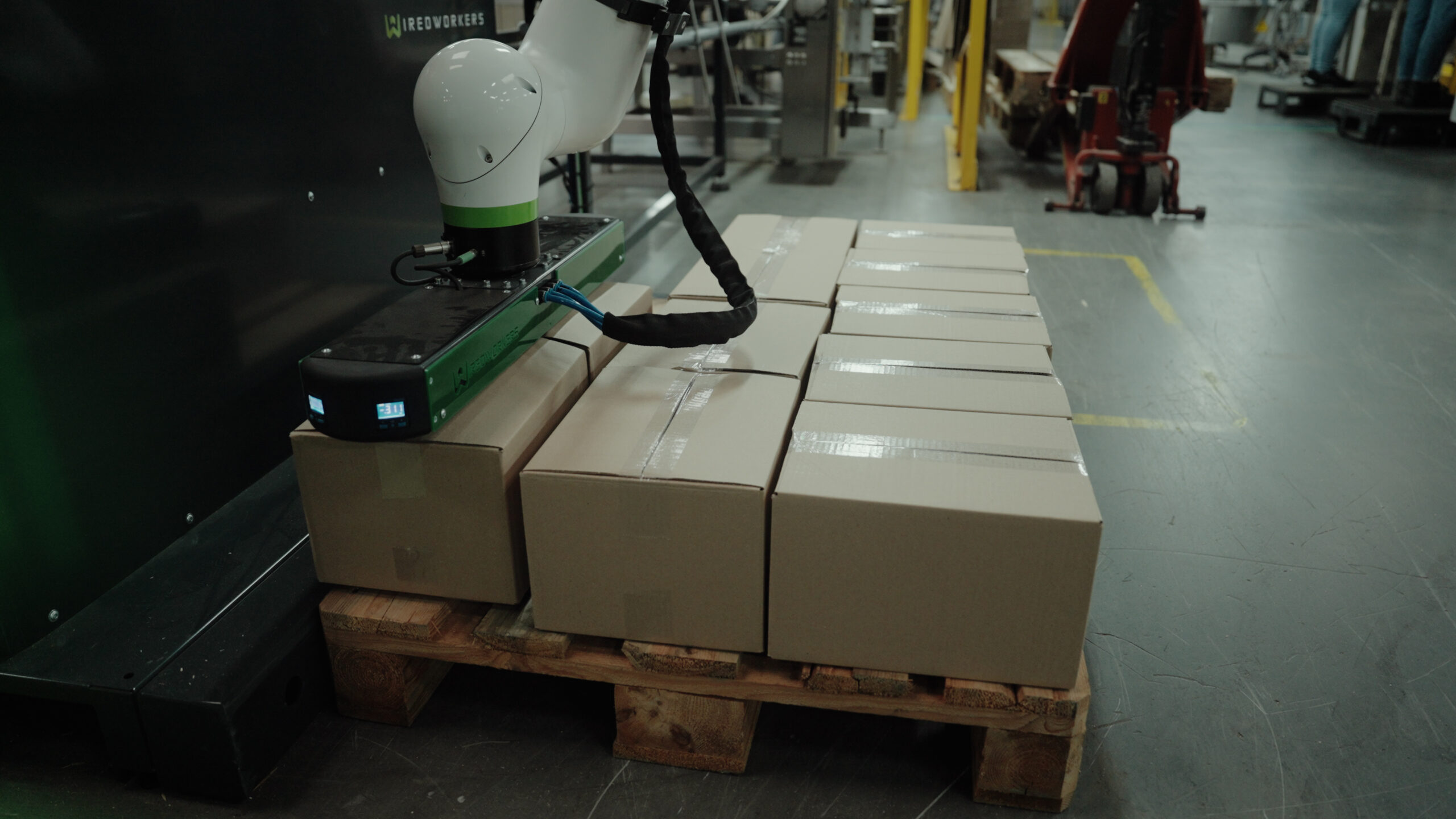
This flexibility is essential for mixed palletizing. Boxes of different sizes, weights, and shapes can be placed on a pallet in the correct order by a cobot. With the push of a button, you can add a new product to the system without programming knowledge or expensive engineering.
2. Improved ergonomics and safety for employees
Manual palletizing is heavy, repetitive, and physically demanding work. Employees sometimes lift hundreds of kilograms per hour, often in uncomfortable positions. This not only leads to health problems, but also to higher absenteeism and lower productivity.
Cobots are designed to work alongside humans. Thanks to built-in safety features such as force and torque sensors, they stop immediately upon contact with a person. This makes it possible to work without cages or fencing, something that is unthinkable with traditional industrial robots.
The result? Employees are relieved of heavy lifting and can focus on tasks with more added value, such as quality control or process optimization. Cobots take over the monotonous work, but actually strengthen the human role on the work floor.
3. Easy to implement and operate
A major advantage of cobots is their ease of use. Whereas traditional robots often require complex integration and programming knowledge, cobots can be set up and deployed in a short period of time.
Most cobots come with intuitive interfaces, often based on drag-and-drop controls or manual “teach” functions. An operator can literally grab the cobot's arm, demonstrate the desired movement, and have the system remember what to do.
For mixed palletizing, this means:
- New products can be added quickly.
- Layouts and stacking patterns can be easily changed.
- No lengthy downtime or expensive external programmers are required.
In addition, cobots take up little space. Their compact design and flexible mounting options make them ideal for existing logistics environments, where every square meter counts.
4. Fast ROI and scalability
One of the biggest barriers to automation in logistics is the investment. Traditional robotic cells are expensive and often take months to implement. Cobots break that pattern.
Thanks to their low purchase price, simple installation, and minimal safety features, cobots often deliver a return on investment within one to two years. They can also work 24/7 without fatigue, significantly increasing productivity.
But perhaps more importantly, cobots are scalable. Companies can start small, for example, with a single palletizing station, and expand the solution later with additional units or advanced software integrations. This makes cobots attractive for both medium-sized manufacturing companies and large logistics hubs.
5. Future-proof technology: ready for Industry 4.0
The rise of cobots fits perfectly within the broader trend of Industry 4.0, in which humans, machines, and data work together seamlessly. Cobots can be linked to ERP or WMS systems and communicate with other machines within the production or logistics chain.
In the context of mixed palletizing, this means:
- Orders are automatically read from the system.
- The cobot knows exactly which products need to go on which pallet.
- Data on performance, malfunctions, and productivity are continuously monitored.
This digitization enables companies to optimize processes and respond better to changing customer demands. Moreover, the combination of AI, machine learning, and vision technology is making cobots increasingly intelligent. In the future, they will be able to make independent decisions about the most efficient stacking sequence or detect deviations in product formats.
Mixed palletising video
Watch the video below of our automation application at a CNC lathe.
Conclusion: from challenge to opportunity
Mixed palletizing is one of the most challenging processes in intralogistics. Increasing product diversity and the demand for speed and flexibility are making manual processes increasingly unfeasible.
Collaborative robots offer the perfect solution for this. They combine intelligence, flexibility, and safety in one compact machine, making automation feasible for companies of all sizes.
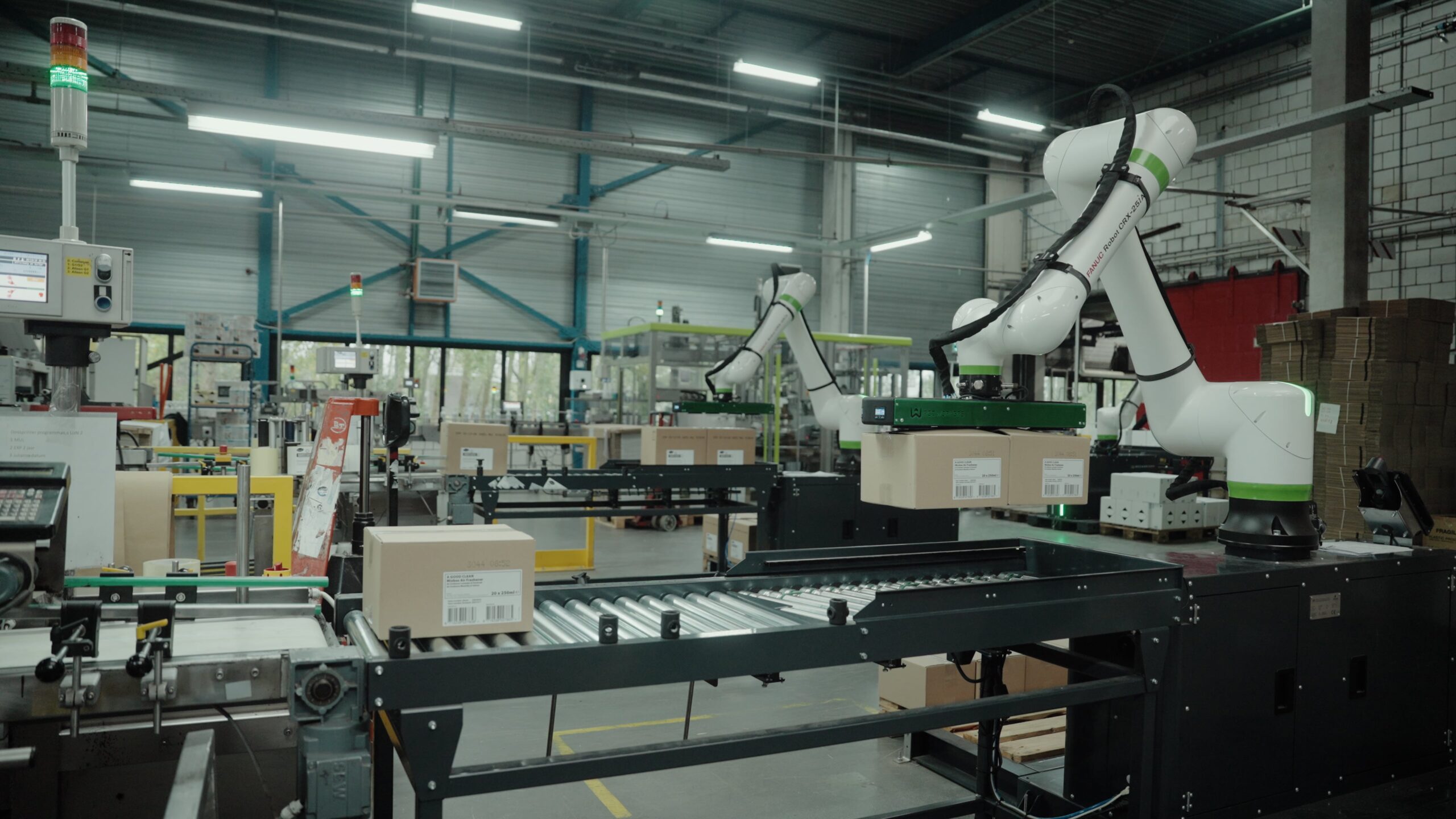
With cobots, companies can not only increase their efficiency, but also improve their working environment and prepare for the future of smart logistics.
Whether you work in the food industry, FMCG, e-commerce, or manufacturing, chances are you will see a cobot at work in the palletizing process in the foreseeable future.
WiredWorkers specializes in integrating cobot systems and has already completed great projects with palletizers. Want to learn more about how collaborative robots can improve your production process? Contact us or schedule a free cobot consultation.



